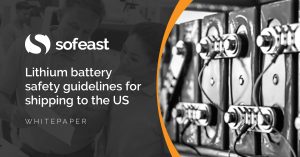 Most economists tend to view the move of (some of) North American and European manufacturing base to China as an illustration of Ricardo’s competitive advantage theory. In their view, developed nations are better off focusing on higher-value-added activities (design, services…) and get rid of low-paid jobs (low-cost manufacturing).
Most economists tend to view the move of (some of) North American and European manufacturing base to China as an illustration of Ricardo’s competitive advantage theory. In their view, developed nations are better off focusing on higher-value-added activities (design, services…) and get rid of low-paid jobs (low-cost manufacturing).
However, it seems more and more academics conclude that the most advanced nations should keep as much of their manufacturing industry as possible.
“As America has stopped manufacturing goods, it’s also sacrificed more than just simple, low-wage jobs. It’s sacrificed the know-how to think of new ways of manufacturing goods.” This is the thesis of a Fast Company article (Only 3% Of What You Buy Is Made In China, But It’s The Most Important 3%, h/t @maxhenry). And I admit it makes a few good points!
Why 3%?
In a much-discussed report last week, San Francisco Federal Reserve economists Galina Hale and Bart Hobijn pointed out that goods labeled “Made in China” make up only 2.7 percent of U.S. consumption. And less than half of the money spent on those products reflected the costs of the actual goods (the rest went to Americans for marketing and logistics).
What is the problem with offshoring production?
“In services like engineering and design, insights gained from the production process are crucial,” Chang argued. “Given this, a weakening manufacturing base will eventually lead to a decline in the quality, and exportability, of these services.”
I tend to agree. Being familiar with the production process, constantly looking for improvements in the technology and in the processes, and looking at what is done in other industries, certainly leads to innovations outside of the production department itself.
So, what is the effect on the countries losing manufacturing jobs?
The concentration of knowledge, skills, equipment and suppliers that are the key to innovative manufacturing, which, if Chang is right, is in turn the key to a healthy economy, is called the “industrial commons” by Harvard’s Gary Pisano and Willy Shih. The problem, as Pisano and Shih pointed out, is that we gave our industrial commons to China (and Japan, Taiwan, and South Korea) in the course of outsourcing the dull grind of manufacturing. As a result, American companies had simply lost the ability to innovate in field after field, ranging from glass for LCDs and CFLs to advanced ceramics and composites to lithium-ion batteries (one reason why GM chose LG Chem’s for the Chevy Volt).
Worse, America is in serious danger of losing its edge in the cutting-edge technologies many hoped would lift the U.S. out of recession: thin-film solar cells, windmills, and bio-tech. It was true that America had outsourced only a sliver of manufacturing to Asian companies, but it was the sliver that counted. “New cutting-edge high-tech products often depend in some critical way on the commons of a mature industry,” Pisano and Shih wrote. “Lose that commons, and you lose the opportunity to be the home of the hot new businesses of tomorrow.”
What do you think?
Lithium-Ion Battery Safety Guidelines For US Imports
Sofeast’s Lithium ion battery safety guidelines for US imports whitepaper is aimed at manufacturers who are producing goods requiring these batteries in China and Asia and seeking to ship them to the USA for sale. In it, we cover everything you need to know about shipping these batteries to the USA, including recalls, product & transport safety, compliance recommendations, and more.
Get your free copy by hitting the link or button below:

